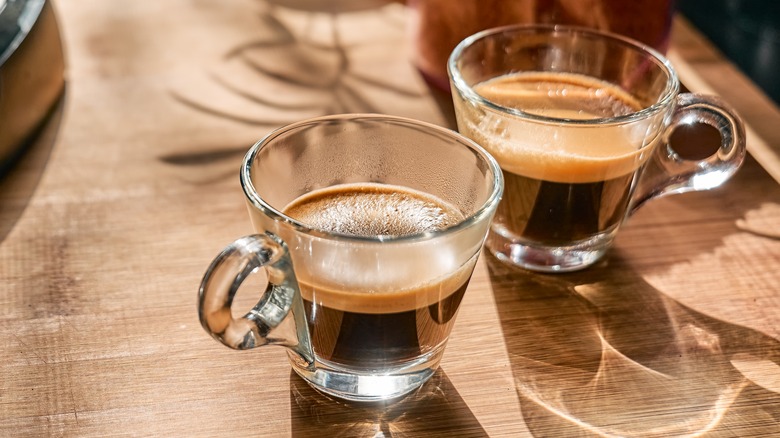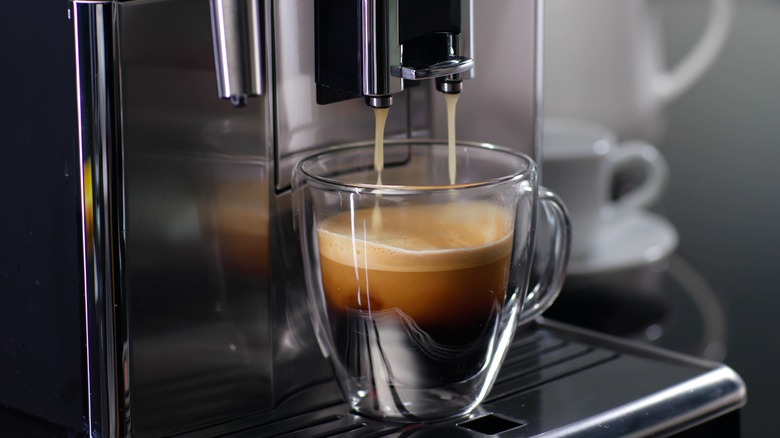What 'Dose' Means In Your Espresso Drink Recipe
According to the Phoenix Roasters Foundation, 64% of Americans consume coffee on a daily basis as their means to get caffeinated. It's seen in several forms today, including cold and hot, lattes, cappuccinos, and the beloved espresso. The Italians, of course, named espresso, and Merriam- Webster writes that it refers to coffee made by filtering hot water through finely ground, dark roasted coffee beans. Espresso grounds are much finer than regular coffee grounds. It's a coffee that is made to order rather than brewed in a pot, and it serves as the base for many of the world's favorite caffeinated beverages.
But there's something special about enjoying an espresso as is. Maybe it offers those of us who've never been to Italy an opportunity to feel a little bit Italian. Or maybe it's the elegant, petite cup that espresso comes in. Whatever the thrill, the secret to an excellent cup of espresso is in the dose.
Why the dose is espresso is everything
The perfect cup of espresso is carefully brewed with three terms in mind: dose, yield, and time. Barista Hustle explains that dose is the weight of the dry grounds in the filter, yield is the weight of the espresso that is made, and time is the amount of contact time between the coffee and the water. Out of those three parts of every espresso recipe, the dose is the main element that determines the outcome of the cup of coffee.
This is because the weight (dose) of the dry grounds determines what type of espresso you'll be enjoying. Most people prefer about 7-10 grams for single baskets, and the amount goes up from there all the way to as much as 20-22 grams of coffee for a triple, according to Clive Coffee. So, you see, if the dose is off, so is your espresso.
When making espresso at home, it can be frustrating trying to perfect the dose. One day it's too strong, and the next, it's too weak. Biohazard Coffee writes that it's pretty simple to make a super strong espresso at home. Simply increase the coffee grounds to water ratio. For a weaker cup, do the opposite.

